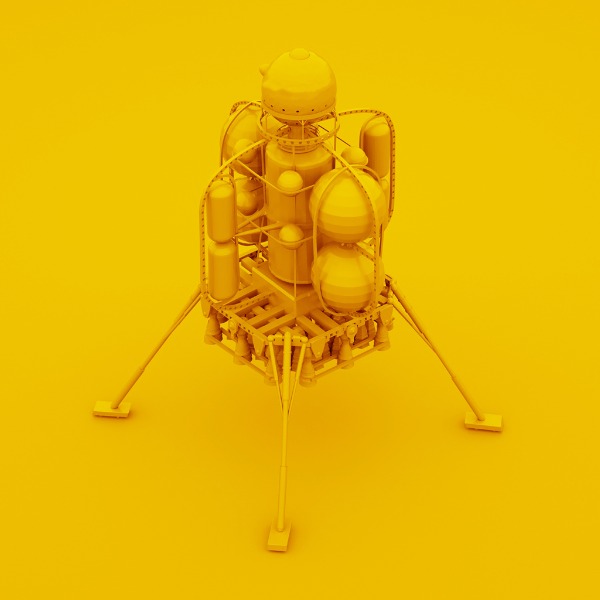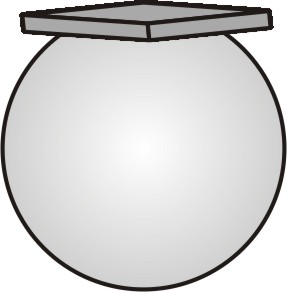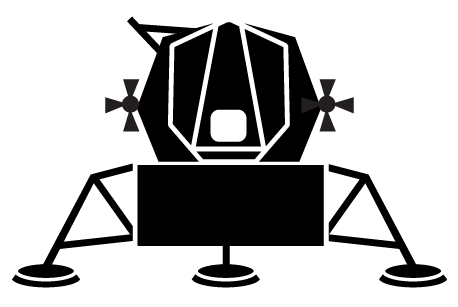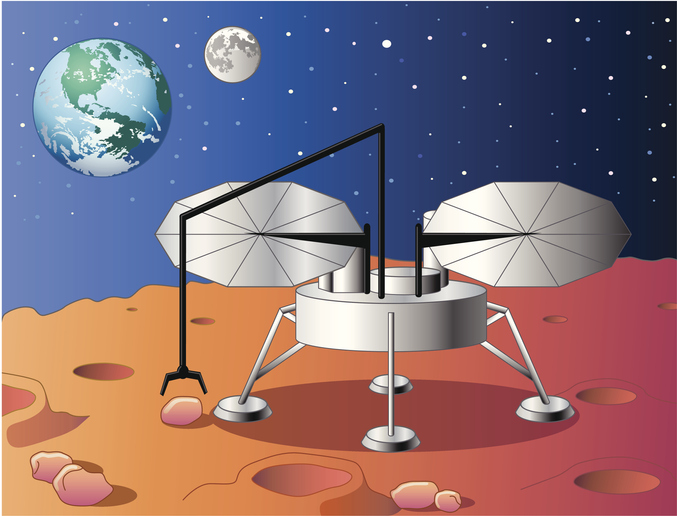How can we land a model space probe?

Space lander (Дмитрий Ларичев, iStockphoto)

Space lander (Дмитрий Ларичев, iStockphoto)
How does this align with my curriculum?
Design and build a model space probe.
What You Need
What To Do
- Attach the cardboard to one side of the ball with tape or hot glue. This is your model space probe. The cardboard simulates solar panels.
- Your challenge is to design and build a device that will land your model space probe upright after a drop.
- You may use only the materials listed above to build your device.
- You must drop your device from a height of 1.5 metres or about 5 feet.
- Your model space probe ‘land’ so that the cardboard square faces directly up.
- Drop the device from 1.5 metres or about 5 feet, three times.
- You have succeeded if the device lands upright on all three drop tests.
Forces act on a space probe as it approaches and hits the ground. As it approaches, gravity pulls the probe towards the ground. Gravity pulls the heaviest part of the probe to the ground the fastest. This is why it’s important to think about how weight is distributed in a probe. If the top of the probe weighs more than the bottom, it’s more likely to tip over during landing.
When the probe hits the ground, the force of its impact can make it bounce into the air and fall over. If you place soft, flexible materials at the bottom of the probe, they can act as shock absorbers. These absorb the energy of an impact and keep the probe from bouncing.
|
Probes are spacecraft that collect scientific information. There are no astronauts in a probe. Probes send scientific information, like radiation or temperature measurements, back to scientists on Earth. Because there are no astronauts in space probes, they need to land safely on their own. Probes that don’t land upright might get damaged. They could also lose the ability to use their solar panels to get power from the sun. Scientists test many different designs to make sure space probes land correctly. Sometimes scientists use parachutes to slow a spacecraft down before landing. This allows it to land safely and complete its mission. |
Does you device still land upright if you:
- Drop it from a greater height?
- Throw it in the air?
- Drop it onto an uneven surface like grass, gravel or sand?
Read more about space probes in this article from NASA’s Jet Propulsion Laboratory.
What’s Happening?
Forces act on a space probe as it approaches and hits the ground. As it approaches, gravity pulls the probe towards the ground. Gravity pulls the heaviest part of the probe to the ground the fastest. This is why it’s important to think about how weight is distributed in a probe. If the top of the probe weighs more than the bottom, it’s more likely to tip over during landing.
When the probe hits the ground, the force of its impact can make it bounce into the air and fall over. If you place soft, flexible materials at the bottom of the probe, they can act as shock absorbers. These absorb the energy of an impact and keep the probe from bouncing.
Why does it matter?
|
Probes are spacecraft that collect scientific information. There are no astronauts in a probe. Probes send scientific information, like radiation or temperature measurements, back to scientists on Earth. Because there are no astronauts in space probes, they need to land safely on their own. Probes that don’t land upright might get damaged. They could also lose the ability to use their solar panels to get power from the sun. Scientists test many different designs to make sure space probes land correctly. Sometimes scientists use parachutes to slow a spacecraft down before landing. This allows it to land safely and complete its mission. |
Investigate Further
Does you device still land upright if you:
- Drop it from a greater height?
- Throw it in the air?
- Drop it onto an uneven surface like grass, gravel or sand?
Learn More
Read more about space probes in this article from NASA’s Jet Propulsion Laboratory.


